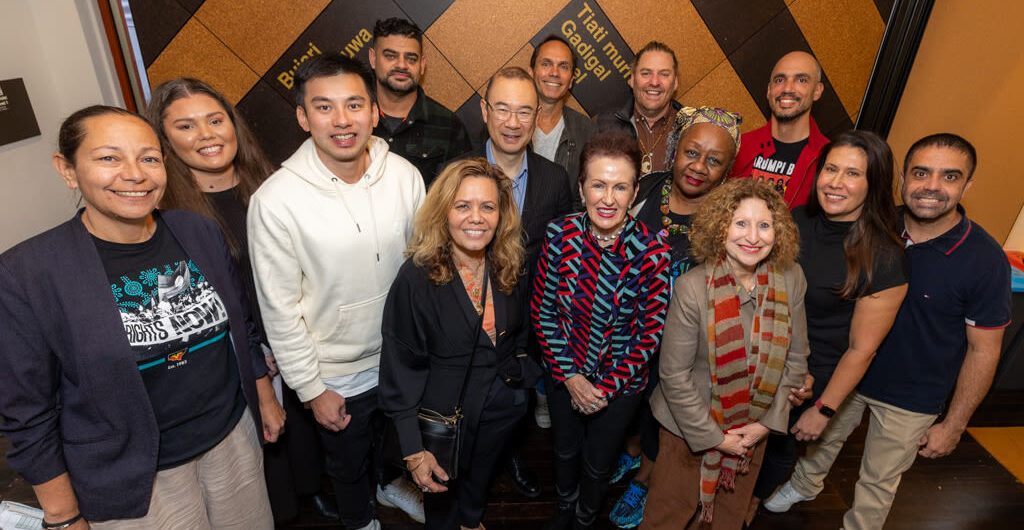
The path to nowhere?
Orphan School Creek in Forest Lodge was a wild pocket of bushland where birds and possums would take refuge from the noisy, frantic pace of the inner city. But today, the land is barren and has a zig-zag path running through its middle.
Local resident Roberta Johnston became interested in the bushland after noticing it was full of native wildlife. Thirteen years ago, in conjunction with other residents, she formed the FRROG (Friends Residents Ratepayers of the Gully) group, with the aim of protecting the area as wildlife habitat. As part of this undertaking, Ms Johnston worked with local, state and federal governments, obtaining funding from several environmental organisations such as the Australian Bird Environment Fund.
As development plans progressed over the years, ownership of the land passed from the original developer, Sterling, to South Sydney and Leichardt Councils, and then finally to City of Sydney, when Forest Lodge fell under their jurisdiction in 2004. During community consultation three years later, Council presented residents with three design options for the gully: walk-through, community garden or wildlife habitat.
“The community was involved in consultation then, just that once, and we were asked what we wanted and we said overwhelmingly we wanted the wildlife habitat option,” said Ms Johnston.
“Then we heard nothing from that point until October 2007. There was a consultation day at Wood Street where they had a sausage sizzle and distracted people with sausages and coffees and teas and lots of nice photos, but at that point we realised they were increasing the size of the children’s playground and had completely decimated a habitat area on the top of Wood Street.”
Needless to say, Ms Johnston is less than pleased by the current outcome. “I would have thought that Council would have tried to abide…as close as possible to the understanding that the community and the developer had,” she said. “They were getting extra floor space ratio on the top of the tallest building, and those efforts for floor space ratio [were] given in return for the promise that they would rebuild the bushland where the wild area, the gully had been.”
Fellow local resident, Michela Noonan, said the DA was approved by Council, but with conditions that any paths had to be accessible for people with disabilities. No-one was aware of the consequences they would have.
“These conditions said that the paths had to be accessible, that they had to be on a gradient of 1:20,” she said. “When everyone was presented with the plans, Council hadn’t done their homework properly and they hadn’t examined whether these paths would be accessible and would be on a gradient of 1:20. It was only afterwards they worked it out, but we don’t know when.”
It wasn’t until October 2008 the community realised something had changed when the developers, Fraser’s, letterboxed a few residents with the Landscape Plan.
The DA included features such as extensive native planting, three discreet pathways running through the site, a small children’s playground and low-level fencing. On the Landscape Plan, however, there was only one path. It was approximately 130 metres long, two metres wide and zigzagged up the embankment. The children’s playground had been moved and expanded.
“We were a bit shocked. We never saw this, what it was all about,” Ms Noonan said. “We had a small meeting in October with some of the councillors who also didn’t know anything about it, and the Council officers agreed to get back to us about how it happened and why it had happened. Then no-one ever got back to us.”
In early March, construction on the path began. In an attempt to stop it, a number of community members, including Ms Noonan, her partner, Chris Blair, and Ms Johnston, organised a series of protests. They claimed the changes would not only result in significant losses in bushland and fragmentation of habitat, but also that the length and steepness of the path failed to provide adequate access for people with disabilities.
In a media statement released that same month, Lord Mayor Clover Moore said she was disappointed that work on the site was being delayed after years of consultation with the community.
“More than 70 advanced trees, 500 young trees, 3,200 shrubs and 19,000 grasses, ground cover, climbers and ferns are ready to be planted to create a native habitat for flora and fauna,” she said.
“In the final plans Council has increased the habitat area, protected and increased the plantings, reduced the path width and removed stairs.”
Cr Moore also added that the City realised the community had been campaigning for over decade for a bushland habitat, and was committed to seeing it happen. “A protest about a path which makes up about two percent of the overall park to provide access for all members of the community does not make sense,” she said.
Community protests culminated in an Extraordinary Council meeting in mid-March, where the group presented their arguments against the path to Councillors. While they gained some concessions, such as reducing the width of the path, retaining native grasses and denser planting, the majority of Councillors voted in favour of the path.
Councillor Meredith Burgmann attended all the protests and the Extraordinary Meeting. She thinks the decision to retain the path is “crazy” and is puzzled by Clover’s Moore’s motivations.
“It still baffles me, that she [Clover Moore] was so determined to push it through,” said Cr Burgmann. “She would have been the local Glebe hero. She’s very precious about her reputation. The run-ins I’ve had with her have all been about her reputation – she hates to be wrong.”
Only recently has Cr Burgmann obtained the amended plans showing the zig-zag path, which were repeatedly denied her with the same excuse: “They’re not ready.”
While she wasn’t sure what happened after the community consultation for the plans to change, Cr Burgmann did notice part of a map was missing at a Council committee meeting in November 2008 when they were considering the tender.
When she drew attention to this, she said she was told by other councillors there was no issue to deal with. A week later, however, she received a plan for the upcoming Council meeting and claims it didn’t detail or highlight plans for the path.
“So that’s why in February, when we suddenly get this huge great path, everyone was so amazed,” said Cr Burgmann. “But they reckon that the decision we took in November was that to let planning go ahead on the DA and the DA said something about disability access.”
“Well, of course, no-one opposed something that said disability access, but when the disability access turned out to be a giant zig-zag path, everyone was just shocked. But we were told that’s what we had agreed to, but of course, we hadn’t.”
Greens Councillor Chris Harris has also been closely involved in the issue. While he couldn’t be certain to what happened for the DA plans to change, he believes it was connected to Clover Moore’s objectives.
“We can’t prove anything, but it seems the Lord Mayor got involved and intervened. Her husband turned up at the Extraordinary meeting that I organised,” he said. “I’d never seen him before and he was heckling people. For some reason they wanted a path through that land.”
“We tried to turn it around but it was Clover driving it. From day one she was absolutely determined not to change it. It’s a mockery of City of Sydney to say that they ran a model of consultation,” he said.
Cr Harris said that he felt sorry for those community members like Roberta Johnston who had put their time, and money and soul into preserving the area and thought they had been betrayed. While he didn’t think the community could take City of Sydney to court due to the cost of legal fees, he did offer some hope. “At the next election if the Greens get stronger numbers, we will oppose the path and move a resolution to pull it up.”
Ms Noonan agreed that taking City of Sydney to court would be too costly and wasn’t sure about pulling up the path as they didn’t want to be “wrecking trees” afterward. However, she thought it could be an option if it was done with limited destruction and it was what the community wanted. At the moment, though, the group remains unsure as to what action they can take next to stop the path being built. They came to the conclusion there were a few things they could do in regards to planting.
“That’s what we’re trying to do at the moment: be vigilant on what they’ll actually plant and what their plans will be,” said Ms Noonan. “We’ve got some concession for planning, but we are just worried because planting can get changed and we haven’t had a very good experience with Council.”
As construction on the path continues, Council has recently agreed to make changes, including the removal of the Giant Guiros – South American percussion instruments. Despite this, residents still have concerns regarding statues, fencing, habitat management, housing and protection of ring-tail possums, discovered after the removal of the bushland.
by Michelle Porter









